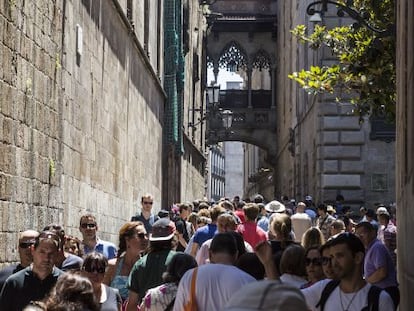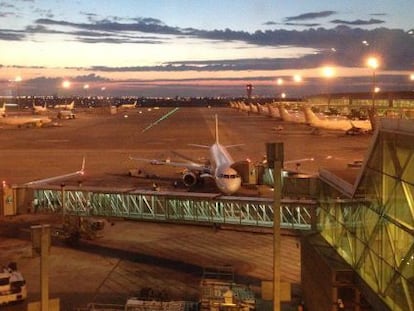The gothic secrets of Barcelona
An intimate architectural tour round the Catalan capital¡¯s medieval corners
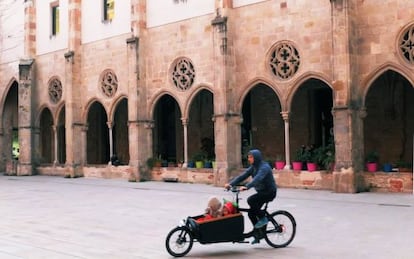
Gothic churches, palaces and monasteries make up some of the most important tourist attractions in Barcelona ¨C the Pedralbes monastery and the elegant Santa Maria del Mar church among them. But many smaller monuments are easily missed by passers-by. This intimate route gives you the chance to take in some of these sights and discover details that have resisted the passage of time in silence, without hundreds of tourist cameras photographing them. Thanks to these memorials, the essence of the old medieval city lives on.
The Capilla del Palau Menor was once part of a palace built by the Knights Templar that was sadly demolished in 1859 and converted into housing
The journey begins in the heart of the Gothic Quarter¡¯s main commercial area, near Calle Portal de l¡¯?ngel. Number 29 on Calle Santa Anna opens up on to a square that houses a small church. Even if its exterior may not be pleasing to the eye, the intriguing octagonal dome interior, as well as the wonderful Santa Ana parish cloister (+34 93 301 35 76), make up for it. The two floor, rectangular-shaped edifice is mainly characterized by its imposing pointed arch. The ground floor has remained the same over the years while the second floor has been repaired many times. Only the workers talking on their cellphones break the silence that dominates the plaza. It is hard to believe that the bustling Plaza de Catalu?a is just a few meters away.
From here head towards the Plaza de la Catedral via Calle Bisbe, where we take a left to arrive at Calle Freneria. At number 14 sits a renovated house that has preserved its antique essence: take note of the wooden beams that maintain its structure and a lobed window on the first floor. Although the building has undergone many refurbishments over the years, the two structures originally date from the 15th century.
Gothic cut-and-paste
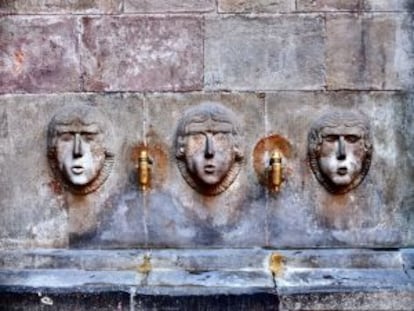
The Gothic exterior of Barcelona City Hall knows a thing or two about change. Situated on Calle del Ciutat next to the Plaza de Sant Jaume, it is one of the most harmonious fa?ades in the Catalan capital. On the main floor, a horizontal development of windows with impressive stonework sits alongside the decorative sculptural work. But there is a flaw among all the beauty ¨C the main door is seriously damaged. When they built the modern neoclassical building that houses City Hall, the fa?ade was marginalized and almost disappeared. It was ultimately saved following protests by the Academy of Literature and Fine Arts, though sadly it was unable to stop the door from being cut down and its right side remaining within the walls of the neoclassical building.
The route continues heading towards the Basilica dels Sants Just I Pastor (+34 93 301 74 33) in the Plaza de Sant Just. In the shadow of her elder sisters, the Cathedral and the Santa Maria del Mar church, it rests peacefully in a silent plaza. The building dates from the 14th century and brings together the best of Catalan Gothic architecture. It is worth paying for a guided tour as it allows you to take a look at the spectacular Santa Cruz altarpiece, which dates from 1530. You can also climb the bell tower, which offers dizzying views of the historic center.
If your ascent to the clouds leaves you a little thirsty, you can take a drink at the Sant Just fountain, just around the corner. Arguments over its construction date abound ¨C some say the 14th century, others the 15th. Keeping out of the debate, its three serio-comic faces seem to want to kiss all the tourists who contemplate it. After quenching your thirst, head towards Calle Lled¨® where at number four, you encounter the thick walls of Palau Fiveller and further on some spectacular ¨C though mostly private ¨C courtyards. You can also head into some of the stores and boutiques that still preserve their original medieval structures.
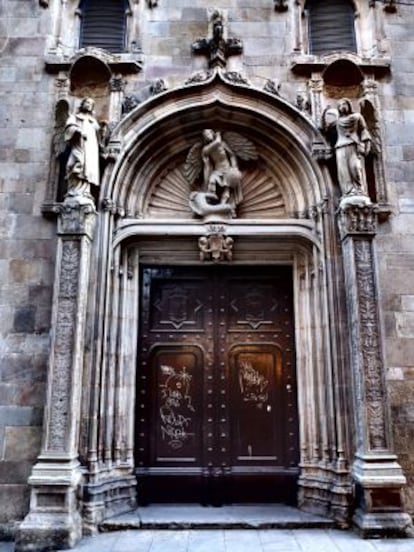
Upon arriving at Calle Ample, you approach the Basilica de la Merc¨¦, dedicated to the Virgin of Mercy, the city¡¯s guardian saint. Although a Baroque church, it is included here because of its Gothic touches. Architectural cutting and pasting was a common practice in the past, which explains the original 1516 door located in the north fa?ade. Originally from the now-disappeared Sant Miquel church, it was integrated into the basilica in 1870, allowing you to check out its late Gothic and renaissance details, especially the pleasantly grotesque ones that were restored after the 1936-39 Civil War.
Although less glamorous than Calle Lled¨®, Calle Ata¨¹lf is more authentic and home to the Capilla del Palau Menor (+34 93 317 45 24) at number four. This beautiful chapel was once part of a palace built by the Knights Templar that was sadly demolished in 1859 and converted into housing. Featuring late Gothic architecture, it has a unique nave and is surprisingly spacious, especially when compared to the discrete entrance designed by Elies Rogent. But this is not the only part of the old complex that remains. At the end of nearby Calle Tim¨®, a stone door also survives that was built by James I to give the Templars who helped him conquer the Mediterranean access to the palace.
Memories of stone
Crossing the V¨ªa Laietana, you arrive at Calle Princesa. From there, take a left on to Calle Montcada and at the corner of Calle Assaonadors, at number one, you find the Casa Puigxoriguer, a building that includes elements from the 18th and 19th centuries, but which has been inhabited since the 14th century. From that era, three Gothic windows remain on the main floor that feature attractive Romanesque arches and small carved faces of bearded noblemen.
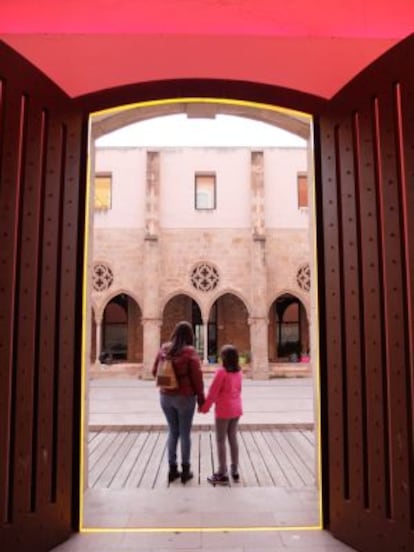
Walking along Calle Carders, you reach the charming courtyard of the Antiguo Convento de Sant Agust¨ª. It was severely damaged during the Barcelona siege in 1714 and later demolished and converted into a military base, at one time including its own bread oven. It is a great place to take a break and enjoy a coffee. Before leaving, it is worth crossing the passageway that leads out on to Calle Comer?. The fluorescent lighting gives a very postmodern feel to this passage from the past.
The tour finishes opposite Santa Mar¨ªa del Mar (which offers visits to its terrace) ¨C not to admire its fa?ade, but rather to look in the opposite direction. You will notice a fountain with a small fortified tower decorated with two gargoyles in the form of a lion and a dragon. The Santa Maria fountain was created by Arnau Barhu¨¦s in 1403 and was known back then as the fountain of the lords: its users were the bourgeois residents of Calle Montcada.
English version by Anne-Gaelle Sy.
Tu suscripci¨®n se est¨¢ usando en otro dispositivo
?Quieres a?adir otro usuario a tu suscripci¨®n?
Si contin¨²as leyendo en este dispositivo, no se podr¨¢ leer en el otro.
FlechaTu suscripci¨®n se est¨¢ usando en otro dispositivo y solo puedes acceder a EL PA?S desde un dispositivo a la vez.
Si quieres compartir tu cuenta, cambia tu suscripci¨®n a la modalidad Premium, as¨ª podr¨¢s a?adir otro usuario. Cada uno acceder¨¢ con su propia cuenta de email, lo que os permitir¨¢ personalizar vuestra experiencia en EL PA?S.
?Tienes una suscripci¨®n de empresa? Accede aqu¨ª para contratar m¨¢s cuentas.
En el caso de no saber qui¨¦n est¨¢ usando tu cuenta, te recomendamos cambiar tu contrase?a aqu¨ª.
Si decides continuar compartiendo tu cuenta, este mensaje se mostrar¨¢ en tu dispositivo y en el de la otra persona que est¨¢ usando tu cuenta de forma indefinida, afectando a tu experiencia de lectura. Puedes consultar aqu¨ª los t¨¦rminos y condiciones de la suscripci¨®n digital.
